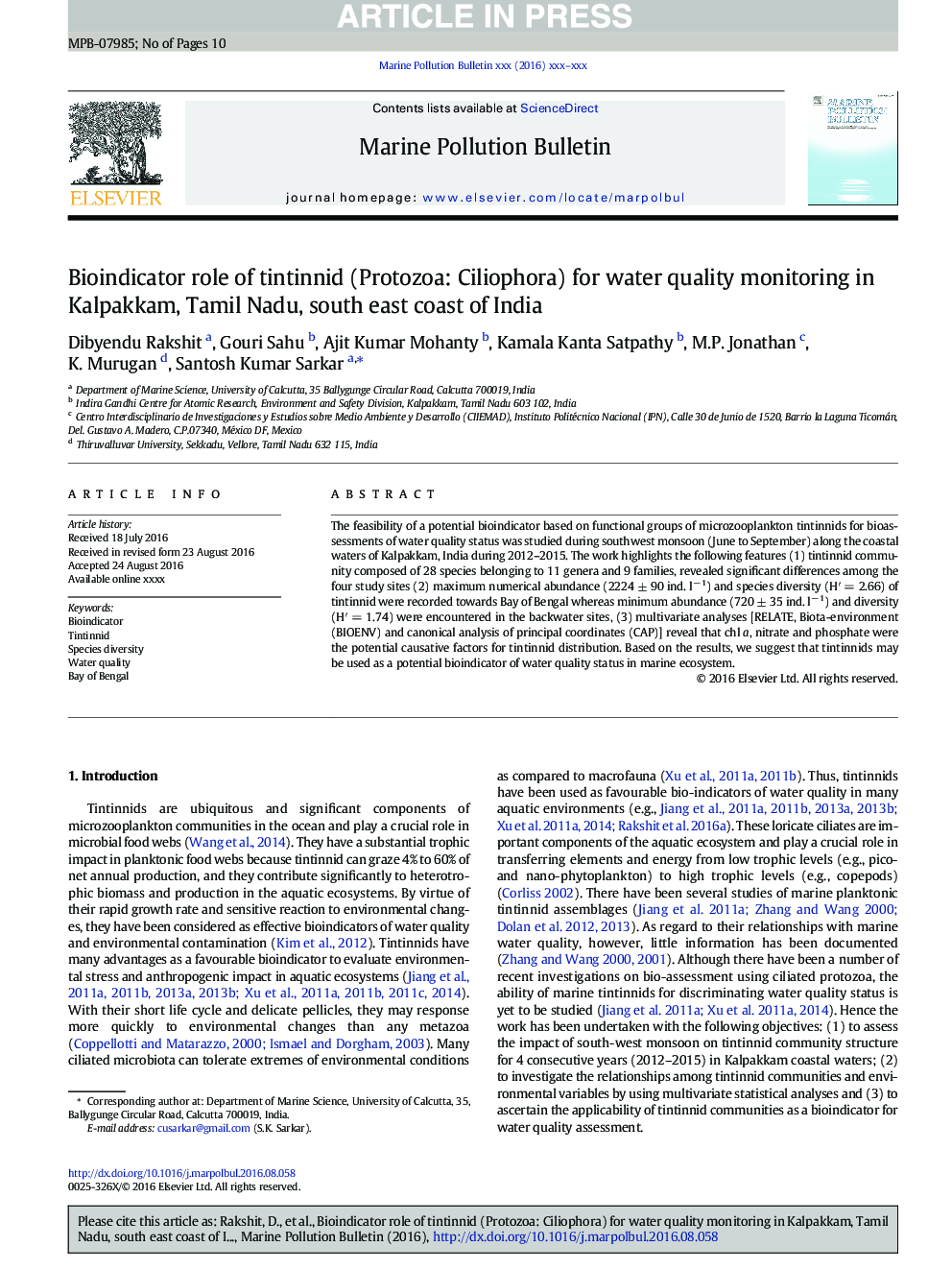| Article ID | Journal | Published Year | Pages | File Type |
|---|---|---|---|---|
| 5757777 | Marine Pollution Bulletin | 2017 | 10 Pages |
Abstract
The feasibility of a potential bioindicator based on functional groups of microzooplankton tintinnids for bioassessments of water quality status was studied during southwest monsoon (June to September) along the coastal waters of Kalpakkam, India during 2012-2015. The work highlights the following features (1) tintinnid community composed of 28 species belonging to 11 genera and 9 families, revealed significant differences among the four study sites (2) maximum numerical abundance (2224 ± 90 ind. lâ 1) and species diversity (Hâ²Â = 2.66) of tintinnid were recorded towards Bay of Bengal whereas minimum abundance (720 ± 35 ind. lâ 1) and diversity (Hâ²Â = 1.74) were encountered in the backwater sites, (3) multivariate analyses [RELATE, Biota-environment (BIOENV) and canonical analysis of principal coordinates (CAP)] reveal that chl a, nitrate and phosphate were the potential causative factors for tintinnid distribution. Based on the results, we suggest that tintinnids may be used as a potential bioindicator of water quality status in marine ecosystem.
Related Topics
Physical Sciences and Engineering
Earth and Planetary Sciences
Oceanography
Authors
Dibyendu Rakshit, Gouri Sahu, Ajit Kumar Mohanty, Kamala Kanta Satpathy, M.P. Jonathan, K. Murugan, Santosh Kumar Sarkar,
